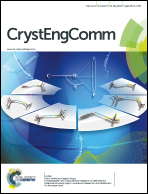Microwave-assisted synthesis of few-layered MoS2/BiOBr hollow microspheres with superior visible-light-response photocatalytic activity for ciprofloxacin removal†
Abstract
BiOBr hollow microspheres attached to few-layered molybdenum disulfide (MoS2) were prepared by an ethylene glycol (EG)-assisted microwave process in the presence of 1-hexadecyl-3-methylimidazolium bromine ([C16mim]Br). The as-prepared samples were characterized by X-ray diffraction (XRD), X-ray photoelectron spectroscopy (XPS), scanning electron microscopy (SEM), transmission electron microscopy (TEM), energy-dispersive X-ray spectroscopy (EDS) and UV-vis diffuse reflectance spectroscopy (DRS). During the reaction process, the ionic liquid [C16mim]Br acts as not only a solvent and Br source, but also as a microwave-absorbing agent and template for the fabrication of MoS2/BiOBr hollow microspheres. In addition, the photocatalytic activity of MoS2/BiOBr was evaluated for the degradation of ciprofloxacin (CIP) and Rhodamine B (RhB) under visible light irradiation. The results indicated that 0.2 wt% MoS2/BiOBr microspheres exhibit higher photocatalytic activity than BiOBr. A possible photocatalytic mechanism based on the relative band position of MoS2 and BiOBr was proposed.


 Please wait while we load your content...
Please wait while we load your content...